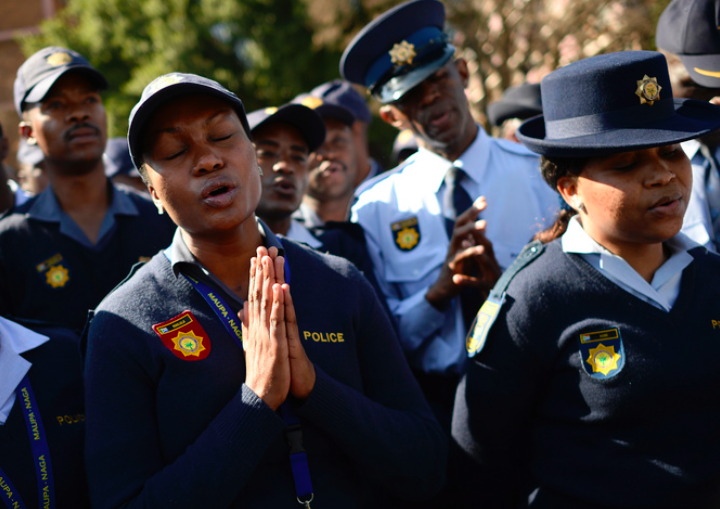Shedding light on the hidden epidemic of police suicide in South Africa


Based on calculations from the SAPS annual 2012-13 report and Statistics South Africa, the number of police deaths by suicide was 73.9 per 100,000 officers. By comparison, 0.9 per 100,000 South Africans die by suicide. While the unacceptably high rate of police murders attracts much media coverage, the bigger problem of suicide among police receives little focus.
Other countries face similar challenges but do not publish suicide statistics among police officers – even though suicide is the leading cause of death among them in most democratic countries. In the US, for example, the FBI has published only aggregated data of the number of officers injured both on and off duty since 1945 but have excluded statistics on officers who have died by suicide.
There are many challenges in dealing with the issue of suicide in police organisations. In South Africa, the recent Khayelitsha Commission of Enquiry into allegations of police inefficiency heard that dealing with emotive issues within the police is made all the more difficult by the prevailing attitude that: Cowboys don’t cry.
The Marikana Commission of Inquiry highlighted the high prevalence of depression and post-traumatic stress, which are known precursors to suicide, among South African police. According to the report of the 153,000 (estimated) SAPS personnel, 10,000 officers suffered from depression and 2700 from post-traumatic stress disorder.
Language of shame
These difficulties are compounded by the social stigma of suicide often created by the language and reactions that surround it. Suicide is an action which is regularly referred to as having been “committed” – a word normally associated with a criminal act. Such language may influence how the police, and society, react to death by suicide.
It has yet to be fully recognised that, in policing and elsewhere, people die by suicide; they do not necessarily “commit” it. Police officers as a group are not skilled in talking about personal issues, especially suicide or depression which are often perceived as shameful, which may prevent them from seeking help.
Such phrasing may also contribute to why the names of officers who die by suicide are excluded on memorial walls and annual rolls of honour. This, despite some of the officers having served society for years before taking their own life. Why, indeed, would they be included if they are associated with doing something wrong?
The language used, plus the denial of a state funeral and exclusion from rolls of honour, all contribute to the continued stigmatisation of police suicides.
Fighting stigma and ending bias
Failing to acknowledge the career of an officer, and only focusing on how they died, may stigmatise the issue of suicide even further in policing.
How an officer died can result in radically different financial results for their bereaved families. If a member of the SAPS is killed while on duty, the family gets paid a death benefit and proceeds from life insurances. But should an officer die by suicide, no compensation benefit is received by the family.
These issues surrounding suicide could be addressed by the introduction of a National Suicide Prevention Strategy Plan, which would incorporate some of the most vulnerable groups – such as the police. The World Health Organisation’s first world suicide report, Preventing suicide: a global imperative, recommends such a plan.
While a national strategy is yet to be defined, the SAPS do have employee health and wellness officers. But they are overwhelmed by an already heavy workload. They have their hands full dealing with everything from financial difficulties to physical and mental health, including suicide prevention, for members of the police service.
What can be done
In 2008, the Badge of Life organisation conducted the National Surveillance of Police Suicides – the first to examine police suicide in the US. This study has been continued annually to establish, track and analyse the extent of the problem in law enforcement. In doing so, they aim to provide clarity and continually monitor the issues and circumstances surrounding police suicides.
Having programs such as this would contribute hugely to understanding suicide and its impact in South African police culture. To date very little research has been done on the causes of police suicide. This needs to change.
- Grainne Perkins, 3 February 2016, First published in The Conversation
